Stephen Clapham's Blog, page 10
December 15, 2022
#17 -The Writer
 /*! elementor - v3.9.1 - 14-12-2022 */.elementor-widget-text-editor.elementor-drop-cap-view-stacked .elementor-drop-cap{background-color:#818a91;color:#fff}.elementor-widget-text-editor.elementor-drop-cap-view-framed .elementor-drop-cap{color:#818a91;border:3px solid;background-color:transparent}.elementor-widget-text-editor:not(.elementor-drop-cap-view-default) .elementor-drop-cap{margin-top:8px}.elementor-widget-text-editor:not(.elementor-drop-cap-view-default) .elementor-drop-cap-letter{width:1em;height:1em}.elementor-widget-text-editor .elementor-drop-cap{float:left;text-align:center;line-height:1;font-size:50px}.elementor-widget-text-editor .elementor-drop-cap-letter{display:inline-block}
/*! elementor - v3.9.1 - 14-12-2022 */.elementor-widget-text-editor.elementor-drop-cap-view-stacked .elementor-drop-cap{background-color:#818a91;color:#fff}.elementor-widget-text-editor.elementor-drop-cap-view-framed .elementor-drop-cap{color:#818a91;border:3px solid;background-color:transparent}.elementor-widget-text-editor:not(.elementor-drop-cap-view-default) .elementor-drop-cap{margin-top:8px}.elementor-widget-text-editor:not(.elementor-drop-cap-view-default) .elementor-drop-cap-letter{width:1em;height:1em}.elementor-widget-text-editor .elementor-drop-cap{float:left;text-align:center;line-height:1;font-size:50px}.elementor-widget-text-editor .elementor-drop-cap-letter{display:inline-block} Vitaliy Katsenelson is an investor, writer and stock-picker. He eschews the usual equity index 60:40 portfolio and uses individual stocks.
SUMMARYVitaliy Katsenelson is an investor and writer. Born in Russia, he now runs an investment adviser in Denver which specialises in picking individual stocks and eschewing the usual 60:40 portfolio with equities indexed. In this podcast we talk about investing, about his third book and about his life philosophy – Vitaliy has a wisdom beyond his years and his positive attitude can improve anyone’s life.
/*! elementor - v3.9.1 - 14-12-2022 */.elementor-widget-image-box .elementor-image-box-content{width:100%}@media (min-width:768px){.elementor-widget-image-box.elementor-position-left .elementor-image-box-wrapper,.elementor-widget-image-box.elementor-position-right .elementor-image-box-wrapper{display:flex}.elementor-widget-image-box.elementor-position-right .elementor-image-box-wrapper{text-align:right;flex-direction:row-reverse}.elementor-widget-image-box.elementor-position-left .elementor-image-box-wrapper{text-align:left;flex-direction:row}.elementor-widget-image-box.elementor-position-top .elementor-image-box-img{margin:auto}.elementor-widget-image-box.elementor-vertical-align-top .elementor-image-box-wrapper{align-items:flex-start}.elementor-widget-image-box.elementor-vertical-align-middle .elementor-image-box-wrapper{align-items:center}.elementor-widget-image-box.elementor-vertical-align-bottom .elementor-image-box-wrapper{align-items:flex-end}}@media (max-width:767px){.elementor-widget-image-box .elementor-image-box-img{margin-left:auto!important;margin-right:auto!important;margin-bottom:15px}}.elementor-widget-image-box .elementor-image-box-img{display:inline-block}.elementor-widget-image-box .elementor-image-box-title a{color:inherit}.elementor-widget-image-box .elementor-image-box-wrapper{text-align:center}.elementor-widget-image-box .elementor-image-box-description{margin:0}
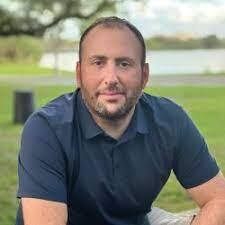 GETTING INTO INVESTING
GETTING INTO INVESTINGVitaliy grew up in Russia and moved to the US at the age of 18. He was hired by an investment firm for his computer skills and at the same time was taking a finance class. He then had an “aha” moment, when he realised that investing was what he wanted to do. In 1997, he faxed his resume to every investment firm in Denver. One firm needed an analyst but hadn’t yet advertised the job. He started there as an analyst, moved to portfolio manager, then CVIP, and 25 years later, today he is CEO and owner of a $350m AUM firm in Denver.
HOW HE MANAGES MONEYSimilarly to Richard Oldfield, Vitaliy is not a proponent of indexing or using ETFs, but believes in stock-picking. He believes that we could be in for an extended period of sideways markets in which investors will have to rely on stock-picking to deliver returns. In the long run the market tracks earnings growth; sometimes valuation will add to returns and sometimes, when coming from a period of high valuations, it will detract from returns. Today we are coming from a period of high returns.
CLIENTSIn any investment firm, having the right clients is the key to success. Vitaliy’s clients find him. He spurns the cocktail circuit and his firm does no cold calling. Rather clients find him, generally through his writings. He thinks his client base has a much lower tendency to FOMO than many others. He likens himself to a pilot flying a plane and he keeps his passengers/clients calm through continuous communication, especially when the going gets turbulent – he wrote to clients weekly during the initial phase of Covid in March, 2020.
SCARCITYVitaliy believes that scarcity is an essential concept that enables him to lead a more fulfilled life. US society is an aspirational society, it’s about abundance. But where there is abundance, we don’t value things. We all have different wealth, different health but on average a similar amount of time. And he views time as a scarce resource, which makes him value his time with his kids, so that the school run is no longer a chore but a privilege – he will only take his elder daughter to school another 400 times, so he wants to appreciate each time. I thought this was a wonderful demonstration of his mindful approach to life.
PERPETUAL LEARNINGThis positive attitude of Vitaliy’s is apparent when he talks about learning and uses the example of his chess teacher. His teacher has a rating of 2300 – 2800 is world champion level and 99% of players are under 1700. Huis teacher is no longer progressing and is not enjoying the game as much. Rather than envying his teacher’s rating, Vitaliy celebrates his lack of proficiency as it gives him the opportunity to improve. We can learn a lot from this positive framing and Vitaliy’s attitude to life.
ABOUT Vitaliy
Vitaliy Katsenelson was born in Murmansk, USSR, and immigrated to the United States with his family in 1991. After joining Denver-based value investment firm IMA in 1997, Vitaliy became Chief Investment Officer in 2007, and CEO in 2012. Vitaliy has written two books on investing and is an award-winning writer, for publications including Financial Times, Barron’s, and Institutional Investor. Vitaliy lives in Denver with his wife and three kids, where he loves to read, listen to classical music, play chess, and write about life, investing, and music. Soul in the Game is his third book, and first non-investing book.
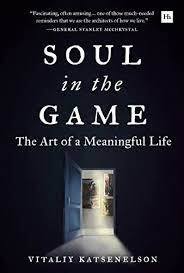 /*! elementor - v3.9.1 - 14-12-2022 */.elementor-widget-divider{--divider-border-style:none;--divider-border-width:1px;--divider-color:#2c2c2c;--divider-icon-size:20px;--divider-element-spacing:10px;--divider-pattern-height:24px;--divider-pattern-size:20px;--divider-pattern-url:none;--divider-pattern-repeat:repeat-x}.elementor-widget-divider .elementor-divider{display:flex}.elementor-widget-divider .elementor-divider__text{font-size:15px;line-height:1;max-width:95%}.elementor-widget-divider .elementor-divider__element{margin:0 var(--divider-element-spacing);flex-shrink:0}.elementor-widget-divider .elementor-icon{font-size:var(--divider-icon-size)}.elementor-widget-divider .elementor-divider-separator{display:flex;margin:0;direction:ltr}.elementor-widget-divider--view-line_icon .elementor-divider-separator,.elementor-widget-divider--view-line_text .elementor-divider-separator{align-items:center}.elementor-widget-divider--view-line_icon .elementor-divider-separator:after,.elementor-widget-divider--view-line_icon .elementor-divider-separator:before,.elementor-widget-divider--view-line_text .elementor-divider-separator:after,.elementor-widget-divider--view-line_text .elementor-divider-separator:before{display:block;content:"";border-bottom:0;flex-grow:1;border-top:var(--divider-border-width) var(--divider-border-style) var(--divider-color)}.elementor-widget-divider--element-align-left .elementor-divider .elementor-divider-separator>.elementor-divider__svg:first-of-type{flex-grow:0;flex-shrink:100}.elementor-widget-divider--element-align-left .elementor-divider-separator:before{content:none}.elementor-widget-divider--element-align-left .elementor-divider__element{margin-left:0}.elementor-widget-divider--element-align-right .elementor-divider .elementor-divider-separator>.elementor-divider__svg:last-of-type{flex-grow:0;flex-shrink:100}.elementor-widget-divider--element-align-right .elementor-divider-separator:after{content:none}.elementor-widget-divider--element-align-right .elementor-divider__element{margin-right:0}.elementor-widget-divider:not(.elementor-widget-divider--view-line_text):not(.elementor-widget-divider--view-line_icon) .elementor-divider-separator{border-top:var(--divider-border-width) var(--divider-border-style) var(--divider-color)}.elementor-widget-divider--separator-type-pattern{--divider-border-style:none}.elementor-widget-divider--separator-type-pattern.elementor-widget-divider--view-line .elementor-divider-separator,.elementor-widget-divider--separator-type-pattern:not(.elementor-widget-divider--view-line) .elementor-divider-separator:after,.elementor-widget-divider--separator-type-pattern:not(.elementor-widget-divider--view-line) .elementor-divider-separator:before,.elementor-widget-divider--separator-type-pattern:not([class*=elementor-widget-divider--view]) .elementor-divider-separator{width:100%;min-height:var(--divider-pattern-height);-webkit-mask-size:var(--divider-pattern-size) 100%;mask-size:var(--divider-pattern-size) 100%;-webkit-mask-repeat:var(--divider-pattern-repeat);mask-repeat:var(--divider-pattern-repeat);background-color:var(--divider-color);-webkit-mask-image:var(--divider-pattern-url);mask-image:var(--divider-pattern-url)}.elementor-widget-divider--no-spacing{--divider-pattern-size:auto}.elementor-widget-divider--bg-round{--divider-pattern-repeat:round}.rtl .elementor-widget-divider .elementor-divider__text{direction:rtl}.e-con-inner>.elementor-widget-divider,.e-con>.elementor-widget-divider{width:var(--container-widget-width);--flex-grow:var(--container-widget-flex-grow)} BOOK RECOMMENDATION
/*! elementor - v3.9.1 - 14-12-2022 */.elementor-widget-divider{--divider-border-style:none;--divider-border-width:1px;--divider-color:#2c2c2c;--divider-icon-size:20px;--divider-element-spacing:10px;--divider-pattern-height:24px;--divider-pattern-size:20px;--divider-pattern-url:none;--divider-pattern-repeat:repeat-x}.elementor-widget-divider .elementor-divider{display:flex}.elementor-widget-divider .elementor-divider__text{font-size:15px;line-height:1;max-width:95%}.elementor-widget-divider .elementor-divider__element{margin:0 var(--divider-element-spacing);flex-shrink:0}.elementor-widget-divider .elementor-icon{font-size:var(--divider-icon-size)}.elementor-widget-divider .elementor-divider-separator{display:flex;margin:0;direction:ltr}.elementor-widget-divider--view-line_icon .elementor-divider-separator,.elementor-widget-divider--view-line_text .elementor-divider-separator{align-items:center}.elementor-widget-divider--view-line_icon .elementor-divider-separator:after,.elementor-widget-divider--view-line_icon .elementor-divider-separator:before,.elementor-widget-divider--view-line_text .elementor-divider-separator:after,.elementor-widget-divider--view-line_text .elementor-divider-separator:before{display:block;content:"";border-bottom:0;flex-grow:1;border-top:var(--divider-border-width) var(--divider-border-style) var(--divider-color)}.elementor-widget-divider--element-align-left .elementor-divider .elementor-divider-separator>.elementor-divider__svg:first-of-type{flex-grow:0;flex-shrink:100}.elementor-widget-divider--element-align-left .elementor-divider-separator:before{content:none}.elementor-widget-divider--element-align-left .elementor-divider__element{margin-left:0}.elementor-widget-divider--element-align-right .elementor-divider .elementor-divider-separator>.elementor-divider__svg:last-of-type{flex-grow:0;flex-shrink:100}.elementor-widget-divider--element-align-right .elementor-divider-separator:after{content:none}.elementor-widget-divider--element-align-right .elementor-divider__element{margin-right:0}.elementor-widget-divider:not(.elementor-widget-divider--view-line_text):not(.elementor-widget-divider--view-line_icon) .elementor-divider-separator{border-top:var(--divider-border-width) var(--divider-border-style) var(--divider-color)}.elementor-widget-divider--separator-type-pattern{--divider-border-style:none}.elementor-widget-divider--separator-type-pattern.elementor-widget-divider--view-line .elementor-divider-separator,.elementor-widget-divider--separator-type-pattern:not(.elementor-widget-divider--view-line) .elementor-divider-separator:after,.elementor-widget-divider--separator-type-pattern:not(.elementor-widget-divider--view-line) .elementor-divider-separator:before,.elementor-widget-divider--separator-type-pattern:not([class*=elementor-widget-divider--view]) .elementor-divider-separator{width:100%;min-height:var(--divider-pattern-height);-webkit-mask-size:var(--divider-pattern-size) 100%;mask-size:var(--divider-pattern-size) 100%;-webkit-mask-repeat:var(--divider-pattern-repeat);mask-repeat:var(--divider-pattern-repeat);background-color:var(--divider-color);-webkit-mask-image:var(--divider-pattern-url);mask-image:var(--divider-pattern-url)}.elementor-widget-divider--no-spacing{--divider-pattern-size:auto}.elementor-widget-divider--bg-round{--divider-pattern-repeat:round}.rtl .elementor-widget-divider .elementor-divider__text{direction:rtl}.e-con-inner>.elementor-widget-divider,.e-con>.elementor-widget-divider{width:var(--container-widget-width);--flex-grow:var(--container-widget-flex-grow)} BOOK RECOMMENDATIONWe talked about the book Blindness by Portuguese author Jose Saramago as Vitaliy loves classical music so much he cannot imagine losing his hearing and would rather lose his sight. I highly recommend the book, but it’s really scary.

Vitaliy recommended the wonderful book Richer, Wiser, Happier: How the World’s Greatest Investors Win in Markets and Life by WiIliam Green – if you haven’t read it, please go out and buy it.
Buy on amazon.com Buy on amazon.co.UK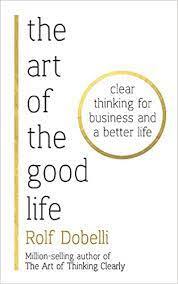
He also recommended The Art of the Good Life: Clear Thinking for Business and a Better Life by Rolf Dobelli, which is a good book, but I think his The Art of Thinking Clearly is even better, especially for investors.
Buy on amazon.com Buy on amazon.co.UK WHERE YOU CAN FIND VITALIYHis site about classical music
Get extra chapters of his new book here
The Intellectual Investor podcast is an audio version of Vitaliy’s writings.
VITALIY’S LATEST BOOKSoul in the Game is published by Harriman House and until the end of 2022 you can get 30% off using the code BTBS30.
HOW STEVE KNOWS THE GUESTSVitaliy reached out to Steve to ask to come on the podcast to promote his book and Steve took a nano second to ask for a date and time, as he has been a long time admirer of Vitaliy’s writing.
PrevMy podcast with Carson Block is featured on a tech investing siteThe post #17 -The Writer appeared first on Behind The Balance Sheet.
December 11, 2022
23 Stocks for ’23
UBS Wealth Management published its picks for next year last month, earlier than most. At the hedge funds, I would not have given such a report the briefest of looks. But for a private investor, sometimes such picks are more interesting.
The reason I decided to put pen to paper was that Meta Platforms was one of their top stocks, which I think is interesting. Before discussing some of the individual names, here is the list by currency:
UBS 23 for ‘23 Source: UBS Wealth Management
Source: UBS Wealth ManagementThere are 11 US names about half the total; 4 from Europe, 2 from the UK and 6 from Asia or a quarter EMEA and a quarter Asia – quite a broad portfolio. The spreadsheet for paying subscribers gives the Factset valuations and the 52-week highs and lows. The average stock was 15% off the high and 35% off the low.
So not a bad spread geographically and also by sector – I spotted 4 energy plays, one miner, 4 industrials, 2 tech stocks and 4 drugs companies. My problem with this portfolio if used by a private investor is that
it’s very diverse geographicallyit covers a wide range of sectorsit has too many stocks in it.This would be extremely difficult for a private investor to monitor, although obviously UBS clients get that done for them. I don’t know all the stocks of course, and there are certainly names that I like, including Lockheed, Meta, Exxon, and Glencore. I just wonder if this portfolio will deliver much performance.
The first reason for my scepticism is the geographic spread. The US market is over-represented in global indices because the market has performed so well and the dollar has been extremely strong. It looks a clear underweight for global portfolios from here.
Exxxon/TotalSecond, I wonder why they have included both Exxon and Total. I should make it clear that I am no expert on the integrated oil majors. Total is on 4.9x 2023 P/E while Exxon is on 10x, with Total offering a 2% yield advantage at 5.2%. I understand that having two stocks gives you twice as much weighting to the oil price and affords some protection against an individual esoteric blowup.
But it’s twice as much work to monitor.
If you believe Total is good enough to be included, I am not clear why you would need Exxon as well. I know many private investors believe they need more stocks to let them sleep at night. But I think private investors often under-estimate the importance of time. That’s equally true of many professionals. And only holding Total would free up additional time to research that position more deeply or to look at another stock.
This trade-off between portfolio concentration and time to do the research is one which I rarely see discussed. But in my view, it’s fundamental to investing success – you need to know what you own. Of course this is a personal choice but one which should be made consciously and constructively. Too often it’s a passive outcome.
Palo Alto Networks/Meta PlatformsThe two tech stocks I spotted were Palo Alto Networks and Meta Platforms on 2023 P/Es of 50x and 14x respectively. I am not familiar with the former which is a global cybersecurity provider, hence the rating. It’s hard to argue with this as a theme, but it’s not going to be a value investor’s favourite with this setup:
Palo Alto Networks Valuation Source: Sentieo
Source: SentieoPalo Alto is growing revenues at 20-25%. and making c.30% EBITDA margins which are projected to FALL to 24%. There may be some reason for the fall in the margin which is then projected to stabilise. There is certainly growth in their market, but teh stock is on 9x this year’s projected sales. Of course, you could make money by buying this stock or something similar, but a lot needs to go right. It’s not the sort of thing which attracts me – too dear, no operational gearing, already high forecast revenue growth and on 22x EBITDA in 2025.
In contrast, Meta Platforms, is trading like a value stock. Bear in mind that the data below are AFTER Zuck’s $10bn pa foray into the Metaverse, the billionaire’s plaything for those who missed out on space travel. Here is the equivalent analysis for Meta Platforms:
Meta Platforms Valuation Source: Sentieo
Source: SentieoA valuation of 6x EBITDA next year after burning $10bn ish on the new toy seems undemanding to me. It’s certainly lower than over 30x next year for Palo Alto. Instead of playing in the metaverse and getting excited about legs on his avatar, imagine if Zuck decided to spend that $10bn on cyber security research. Palo Alto Networks’ total cash expenditure is $4bn pa. That’s not the R&D, that’s everything – probably what Meta spends on free lunches, stationery and incidentals.
Mercedes BenzThe inclusion of Mercedes surprised me at first, although I think a number of value investors are becoming interested in the automotive OEM sector on the basis that Tesla, even after the drop, is still valued at more than the rest of the industry put together.
That certainly seems illogical, but the winners of the transition to electric vehicles is far from clear to me. Currently, I would say certainly Tesla and probably some of the South Korean manufacturers. Five years ago, I would have assumed the Japanese players, although they don’t seem to be grabbing the limelight with new EV products.
Here is the Mercedes valuation:
Mercedes Valuation Summary Source: Sentieo
Source: SentieoI assume the EV is inflated by the inclusion of debt relating to the lease book. As a result, the EV:sales and EV:EBITDA numbers are probably overstated. I am not surprised at the P/E multiple of 5.0-5.5x. Historically, I recall that the OEMs never attracted much of a rating. On the other hand, a double digit forward FCF yield surprised me and the historical 24% and 27% look extremely high – I would need to do some further work on this.
Given that
1 car companies have never traded at high valuations, partly because of the excess capacity in the industry
2 the move to electrification creates massive uncertainties as to a) who will be the winners; b) what will be the cost of success; and c) what will be the steady state run rate of profitability?
3 the question of mobility Is not as pressing as seemed possible when I last looked in detail at the industry five years ago, but it remains a potential sinkhole for the industry cash. So too is the move to automated vehicles which is likely to absorb a huge R&D investment and will likely only have one or two winners. This is a major risk.
4 short term profitability has been affected by the Covid-affected supply chain interruptions which have helped demand and boosted used car prices with a corresponding impact on leasing profits; to what extent has normalisation been factored in to consensus estimates?
In my last review of the industry (linked below for paid subscribers), I felt that there were huge risks facing the automotive industry and that it was an easy long term short. Valuations are cheaper today but the risks haven’t gone away. I like the free cash flow yield at Mercedes and to some extent the dividend pays you to wait, but I am not sure that such stocks warrant inclusion in a private client portfolio. Quite risky.
Alexandria Real EstateAlexandria Real Estate caught my eye as it’s trading at 2.2x historical book and 1.2x prospective book. It’s an unusual real estate investment trust (REIT), focusing on “collaborative life science, agtech, and technology campuses in various cluster locations”. With properties in Greater Boston, the San Francisco Bay Area, New York City, San Diego, Seattle, and elsewhere, it is presumably being valued on the basis of redevelopment potential.
But the 2024 consensus price:book is still high at 1.2x, so it’s far from the cheapest property play – lots of high end assets on offer in global markets at significant discounts to historical book. I understand why investors might be worried that interest rate increases will drive valuation yields up, but some of the discounts look attractive. In an inflationary environment, I imagine that property won’t do badly, although it might be a case of survival of the fittest, as it was in the 1970s. Paying a premium for a fashionable property sub-sector isn’t an obvious one to me, but I don’t know the details.
ConclusionSo that was a short cruise through part of a wealth manager’s global portfolio for 2023. Obviously I haven’t covered all the names and I would be happy to return to any that people were interested in.
The post 23 Stocks for ’23 appeared first on Behind The Balance Sheet.
December 9, 2022
My podcast with Carson Block is featured on a tech investing site
The post My podcast with Carson Block is featured on a tech investing site appeared first on Behind The Balance Sheet.
Barry Ritholtz features my podcast with him
The post Barry Ritholtz features my podcast with him appeared first on Behind The Balance Sheet.
Steve appears on a London area investing podcast
The post Steve appears on a London area investing podcast appeared first on Behind The Balance Sheet.
Times Radio invited Steve to speak about Mifid regulations on 9/12/22
The post Times Radio invited Steve to speak about Mifid regulations on 9/12/22 appeared first on Behind The Balance Sheet.
November 30, 2022
Steve writes in The Times about the demise of Made.com
The post Steve writes in The Times about the demise of Made.com appeared first on Behind The Balance Sheet.
Steve writes in Investors Chronicle about growth stocks
The post Steve writes in Investors Chronicle about growth stocks appeared first on Behind The Balance Sheet.
November 17, 2022
#16 – The Podcast Host
 /*! elementor - v3.8.1 - 13-11-2022 */.elementor-widget-text-editor.elementor-drop-cap-view-stacked .elementor-drop-cap{background-color:#818a91;color:#fff}.elementor-widget-text-editor.elementor-drop-cap-view-framed .elementor-drop-cap{color:#818a91;border:3px solid;background-color:transparent}.elementor-widget-text-editor:not(.elementor-drop-cap-view-default) .elementor-drop-cap{margin-top:8px}.elementor-widget-text-editor:not(.elementor-drop-cap-view-default) .elementor-drop-cap-letter{width:1em;height:1em}.elementor-widget-text-editor .elementor-drop-cap{float:left;text-align:center;line-height:1;font-size:50px}.elementor-widget-text-editor .elementor-drop-cap-letter{display:inline-block}
/*! elementor - v3.8.1 - 13-11-2022 */.elementor-widget-text-editor.elementor-drop-cap-view-stacked .elementor-drop-cap{background-color:#818a91;color:#fff}.elementor-widget-text-editor.elementor-drop-cap-view-framed .elementor-drop-cap{color:#818a91;border:3px solid;background-color:transparent}.elementor-widget-text-editor:not(.elementor-drop-cap-view-default) .elementor-drop-cap{margin-top:8px}.elementor-widget-text-editor:not(.elementor-drop-cap-view-default) .elementor-drop-cap-letter{width:1em;height:1em}.elementor-widget-text-editor .elementor-drop-cap{float:left;text-align:center;line-height:1;font-size:50px}.elementor-widget-text-editor .elementor-drop-cap-letter{display:inline-block} Barry Ritholtz hosts one of the most popular business podcasts in the world. He rather modestly says he was one of the first. He has also built a $3bn wealth manager in just ten years.
SUMMARYBarry Ritholtz hosts one of the most popular business podcasts in the world. He rather modestly says he was one of the first. Ritholtz not only has managed to interview investing heroes like Ed Thorpe, Ray Dalio (twice) and Michael Lewis (four times) but also has built a $3bn wealth manager in just ten years. In this interview, Barry explains why financial TV is irrelevant, why the F.I.R.E. contingent (Financial Independence, Retire Early) have it wrong, why 70:30 should be the new 60:40, why investors should think in decades, how he can call Mike Bloomberg “dude” and not get fired, and what it’s like to have broadcast over 450 shows.
.
/*! elementor - v3.8.1 - 13-11-2022 */.elementor-widget-image-box .elementor-image-box-content{width:100%}@media (min-width:768px){.elementor-widget-image-box.elementor-position-left .elementor-image-box-wrapper,.elementor-widget-image-box.elementor-position-right .elementor-image-box-wrapper{display:-webkit-box;display:-ms-flexbox;display:flex}.elementor-widget-image-box.elementor-position-right .elementor-image-box-wrapper{text-align:right;-webkit-box-orient:horizontal;-webkit-box-direction:reverse;-ms-flex-direction:row-reverse;flex-direction:row-reverse}.elementor-widget-image-box.elementor-position-left .elementor-image-box-wrapper{text-align:left;-webkit-box-orient:horizontal;-webkit-box-direction:normal;-ms-flex-direction:row;flex-direction:row}.elementor-widget-image-box.elementor-position-top .elementor-image-box-img{margin:auto}.elementor-widget-image-box.elementor-vertical-align-top .elementor-image-box-wrapper{-webkit-box-align:start;-ms-flex-align:start;align-items:flex-start}.elementor-widget-image-box.elementor-vertical-align-middle .elementor-image-box-wrapper{-webkit-box-align:center;-ms-flex-align:center;align-items:center}.elementor-widget-image-box.elementor-vertical-align-bottom .elementor-image-box-wrapper{-webkit-box-align:end;-ms-flex-align:end;align-items:flex-end}}@media (max-width:767px){.elementor-widget-image-box .elementor-image-box-img{margin-left:auto!important;margin-right:auto!important;margin-bottom:15px}}.elementor-widget-image-box .elementor-image-box-img{display:inline-block}.elementor-widget-image-box .elementor-image-box-title a{color:inherit}.elementor-widget-image-box .elementor-image-box-wrapper{text-align:center}.elementor-widget-image-box .elementor-image-box-description{margin:0} GETTING INTO INVESTING
GETTING INTO INVESTINGBarry went to law school but he was always interested in stocks and markets. He started out as a trader, which was great fun, but too volatile. He took a position as a research analyst, started writing with TheStreet.com, The Washington Post and Bloomberg and never looked back. He set up Ritholtz Wealth in 2013 with 3 colleagues and it has achieved phenomenal growth, helped by the partners’ massive presence on social media - Barry has over 200k followers while CEO Josh Brown has 1.1m!
On the Future of 60:40Ritholtz believes that bonds are attractive again with yields at 4% as we recorded on the last day of September, 2022. But pre-pandemic, their model was at 70:30 rather than 60:40, because of ageing. With life expectancy at 80-85 years (vs 72 at inception of 60:40), Barry believes that savers need to be more heavily weighted to equities for longer than in the traditional model.
You also need to think about how much longer you need to contribute. The FIRE contingency has it wrong. If you can earn a decent living in your 40s and 50s, think about working a bit longer so you can retire comfortably. You may need a bit more than you think. And you need a reason to get out of bed – golf won’t do it for many people. Barry’s mum retired as a realtor, but was selling rare books into her 1980s – she needed more than bridge or mahjong.
The Masters in Business PodcastBloomberg asked Barry to start writing and offered him a TV show. He asked to do a 2 hour audio show and they laughed but agreed to a 42 minute radio show which could be turned into an hour with traffic and news. If they last longer, they can be put on the website. To start with it was Barry’s personal rolodex, but his break came with Bill Gross. Barry got wind of the Pimco bonus pool and published that Gross had taken home $300m that year, and he agreed to come on the show. Then he started to get A-list guests like Cliff Asness. This was Bloomberg’s first podcast and it blew up. Barry has recorded over 450 shows now.
Barry finishes off with some advice for Steve – you get much better after 200 episodes!
ABOUT Barry RitholtzBarry Ritholtz is co-founder, chairman, and chief investment officer of Ritholtz Wealth Management, a wealth manager founded in 2013 with over $3 bn AUM. Ritholtz may be best known to this audience as host of Masters in Business, the most popular podcast on Bloomberg Radio, which has 8-10m downloads pa. (I have some way to go). His blog, The Big Picture, generates half a million page views per month and has amassed some 275m visitors since 2003. Ritholtz first came to the wider public’s attention when he issued a series of warnings about an impending market collapse and recession, with a 50% downside target which was reached in March 2009. In his spare time, one of his hobbies is buying cars, which we talk about in the show.

Source: Ritholtz Wealth Management
/*! elementor - v3.8.1 - 13-11-2022 */.elementor-widget-divider{--divider-border-style:none;--divider-border-width:1px;--divider-color:#2c2c2c;--divider-icon-size:20px;--divider-element-spacing:10px;--divider-pattern-height:24px;--divider-pattern-size:20px;--divider-pattern-url:none;--divider-pattern-repeat:repeat-x}.elementor-widget-divider .elementor-divider{display:-webkit-box;display:-ms-flexbox;display:flex}.elementor-widget-divider .elementor-divider__text{font-size:15px;line-height:1;max-width:95%}.elementor-widget-divider .elementor-divider__element{margin:0 var(--divider-element-spacing);-ms-flex-negative:0;flex-shrink:0}.elementor-widget-divider .elementor-icon{font-size:var(--divider-icon-size)}.elementor-widget-divider .elementor-divider-separator{display:-webkit-box;display:-ms-flexbox;display:flex;margin:0;direction:ltr}.elementor-widget-divider--view-line_icon .elementor-divider-separator,.elementor-widget-divider--view-line_text .elementor-divider-separator{-webkit-box-align:center;-ms-flex-align:center;align-items:center}.elementor-widget-divider--view-line_icon .elementor-divider-separator:after,.elementor-widget-divider--view-line_icon .elementor-divider-separator:before,.elementor-widget-divider--view-line_text .elementor-divider-separator:after,.elementor-widget-divider--view-line_text .elementor-divider-separator:before{display:block;content:"";border-bottom:0;-webkit-box-flex:1;-ms-flex-positive:1;flex-grow:1;border-top:var(--divider-border-width) var(--divider-border-style) var(--divider-color)}.elementor-widget-divider--element-align-left .elementor-divider .elementor-divider-separator>.elementor-divider__svg:first-of-type{-webkit-box-flex:0;-ms-flex-positive:0;flex-grow:0;-ms-flex-negative:100;flex-shrink:100}.elementor-widget-divider--element-align-left .elementor-divider-separator:before{content:none}.elementor-widget-divider--element-align-left .elementor-divider__element{margin-left:0}.elementor-widget-divider--element-align-right .elementor-divider .elementor-divider-separator>.elementor-divider__svg:last-of-type{-webkit-box-flex:0;-ms-flex-positive:0;flex-grow:0;-ms-flex-negative:100;flex-shrink:100}.elementor-widget-divider--element-align-right .elementor-divider-separator:after{content:none}.elementor-widget-divider--element-align-right .elementor-divider__element{margin-right:0}.elementor-widget-divider:not(.elementor-widget-divider--view-line_text):not(.elementor-widget-divider--view-line_icon) .elementor-divider-separator{border-top:var(--divider-border-width) var(--divider-border-style) var(--divider-color)}.elementor-widget-divider--separator-type-pattern{--divider-border-style:none}.elementor-widget-divider--separator-type-pattern.elementor-widget-divider--view-line .elementor-divider-separator,.elementor-widget-divider--separator-type-pattern:not(.elementor-widget-divider--view-line) .elementor-divider-separator:after,.elementor-widget-divider--separator-type-pattern:not(.elementor-widget-divider--view-line) .elementor-divider-separator:before,.elementor-widget-divider--separator-type-pattern:not([class*=elementor-widget-divider--view]) .elementor-divider-separator{width:100%;min-height:var(--divider-pattern-height);-webkit-mask-size:var(--divider-pattern-size) 100%;mask-size:var(--divider-pattern-size) 100%;-webkit-mask-repeat:var(--divider-pattern-repeat);mask-repeat:var(--divider-pattern-repeat);background-color:var(--divider-color);-webkit-mask-image:var(--divider-pattern-url);mask-image:var(--divider-pattern-url)}.elementor-widget-divider--no-spacing{--divider-pattern-size:auto}.elementor-widget-divider--bg-round{--divider-pattern-repeat:round}.rtl .elementor-widget-divider .elementor-divider__text{direction:rtl}.e-con-inner>.elementor-widget-divider,.e-con>.elementor-widget-divider{width:var(--container-widget-width,100%)} BOOK RECOMMENDATIONBarry recommended three books.
Bull!: A History of the Boom and Bust, 1982-2004 by Maggie Mahar. A market history.
 Buy on amazon.com Buy on amazon.co.UK
Buy on amazon.com Buy on amazon.co.UK Black Monday by Tim Metz on the run up to the 1987 crash.
 Buy on amazon.com Buy on amazon.co.UK
Buy on amazon.com Buy on amazon.co.UK Last Ape Standing by Chip Walter is a book about how homo sapiens managed to survive other species, a predecessor to the behavioural finance books.
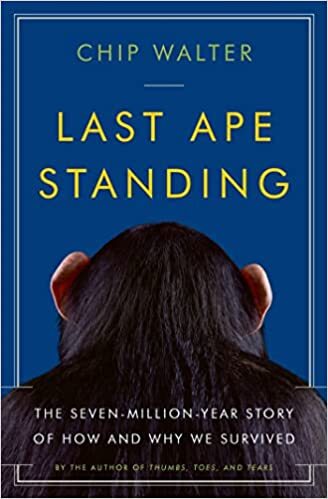 Buy on amazon.com Buy on amazon.co.UK STREAMING RECOMMENDATIONS
Buy on amazon.com Buy on amazon.co.UK STREAMING RECOMMENDATIONSBarry asks his guests for their favourite streaming suggestions and I asked for the best and worst of these recommendations. Instead, Barry gave me three of his streaming favourites:
Madmen – sounds overblown, but quite realistic.
Mozart in the Jungle – spectacular.
Magicians – something he stumbled on and loves.
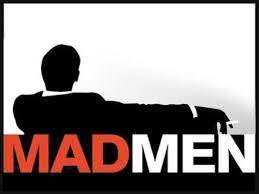

 HOW STEVE KNOWS THE GUEST
HOW STEVE KNOWS THE GUESTSteve and Barry met via Twitter. Barry had previously featured Steve’s blog in his Big Picture column but he recently DM’ed Steve who took the opportunity to invite Barry on the podcast as he was curious what Barry had learned in some 420 interviews, including many with some of the investing greats. To his surprise and delight, Barry said yes.
PrevSteve writes about the cash flow statement for Investors ChronicleThe post #16 – The Podcast Host appeared first on Behind The Balance Sheet.
October 31, 2022
Steve writes about the cash flow statement for Investors Chronicle
The post Steve writes about the cash flow statement for Investors Chronicle appeared first on Behind The Balance Sheet.



